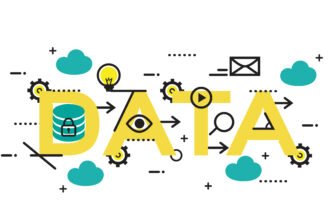Big data and cannabis are two seemingly different concepts. However, the two industries tie in very well with each other.
CBD companies are relying more on big data than ever before. In June, Nicole Martin wrote a very detailed article for Forbes on the role of big data in operations management for the cannabis industry.
“Data helps to drive every industry now. When used effectively, it can lower operational costs and utilize resources in a more effective manner. The U.S. legal cannabis market was valued at $11.9 billion in 2018 and is expected to be worth $66.3 billion by the end of 2025. With this kind of growth, data collection and use are essential to the Cannabis industry in many ways. The access to a vast amount of data, allows growers to optimize for environmental changes and variables and can even change the strain of the product,” she writes.
One of the most important roles of big data in the CBD industry is with marketing. This is important, because of the complexity of the industry.
Marketing CBD products is trickier than you might expect. Although misconceptions regarding the use of CBD are starting to disappear, many people are still wary of the products. As a result, big companies like Facebook and Google severely limit your ability to market digitally.
If you’re marketing for an online CBD store or a brick and mortar establishment, you’ll need to get creative with your strategies. Big data can help with this. If you know how to gather, analyze, and apply big data to your marketing strategy, you’ll have no trouble putting your company at the top of the industry!
1. Know Your Market
All successful marketers know the value of understanding their target audience. The better you know the people who will buy your CBD products, the more you’ll sell. You’re also more likely to get repeat and loyal customers.
There are a number of different market segments. If you work with review companies, customers can use big data to find your brand.
Marketers who know their audience best probably use big data to help them refine their audiences and curate their marketing strategies accordingly. Rather than guessing who will most likely buy from you, you can pull existing data from your website sales, Google analytics, or another data-collecting tool to identify the best-performing audience segments.
You can also use the data to test new clients. As information becomes more available to individuals regarding CBD, the target audience widens to include more individuals. You can develop new audience segments and run short campaigns to see how they perform. You might find a brand-new revenue stream with the data collected.
2. Find Influencers
Since you can’t take advantage of traditional advertising on major social pages like Facebook, you’ll want to adopt influencer marketing. Through the data you’ve collected, you can run highly effective influencer marketing campaigns that blow your competitors out of the water.
After defining your target audience, research the success of non-competitive influencers whose followers make up your primary audience. You can run analytics on their followers to make sure they’re really in your target audience. You can also check out the engagement received in past campaigns to determine whether a new campaign will be worth your money.
This data can help you connect with the right influencers, but it will also help you determine the effectiveness of a campaign, so you know if another will be worthwhile.
3. Retarget to Create Loyal Customers
You can use data from past marketing campaigns, social media engagement, and purchasing history to help you retarget those who have already engaged and develop loyal customers as a result.
Use data to identify which customers have given you the most attention in the past. This goes beyond running a retargeting campaign based on Facebook and Google AdWords data. You can retarget specific URL visits, send marketing material to existing customers through an email list, and generate lead-based ads based on page engagements. None of this is possible without the use of data.
4. Work around the Social Algorithms
Instagram, Facebook, and Google ads are highly effective when it comes to using data to target a specific audience. But you don’t have that choice as a CBD marketer, since these social media giants and others like them block any CBD advertising.
Get creative and work around the social algorithm. Start with educating your customers from CBD’s stress relieving properties to how it helps reduce inflammation. Look at your website dashboard and see which blog posts have received the most traffic. Share these posts to your social page again, and then develop new content that provides similar information in a new way.
You can also use keyword and hashtag research to help you identify trending terms and tags you should be using in your posts to draw the most attention. By tapping into the data that social media offers, you can still effectively market your products without breaking the rules.
5. Retain Customers
While you’re working on acquiring new customers, don’t forget about your current ones. Many have probably been following you from the beginning, and they deserve your attention. Using the information, you have on these customers’ past transactions, you can easily find those who have been most loyal and reward them for it.
You can determine how you’d like to reward each customer. You might find those who have been with you for more than a year or those who have made more than two purchases. You might offer them a special discount or another prize for their efforts. Hand-picking your best customers and recognizing their loyalty is one of the best ways to make sure they never leave.
6. Test Your Advertisements
Facebook and its underlings have recently lifted an all-out ban for CBD products, now allowing marketers to advertise for topical products only. You can also advertise on business property that you own or in municipalities that allow the legal sale of hemp-based products.
Test the use of these advertisements as much as possible. If you’re able to do digital advertising, use the analytics the ad platform offers when the ad has finished. You can do A/B testing to improve your ads accordingly.
You can also collect this data on your own with a simple survey that asks where customers learned about your products, whether it was a billboard or a Facebook advertising. Creating your own pool of data around your marketing strategy can be invaluable for directing advertising campaigns going forward.
7. Improve SEO
Since there are so many restrictions on advertising CBD, working on SEO is one of the best strategies for gaining brand awareness and drawing in customers. This is an organic approach to building your brand that you can improve with the data you collect from your customers.
You can do the research and analyze the data required for running your own SEO campaign, but you’ll probably get better results and save more money by using an SEO expert or company. Because they specialize in this aspect of marketing, they have more data, resources, and knowledge that you have. You can allow them to run your SEO campaign while you focus your efforts on other marketing aspects.
Big Data is Critical to the Thriving Cannabis Market
The CBD industry is thriving, largely due to advances in big data. Big data is making it easier than ever for companies to find their target customers.










